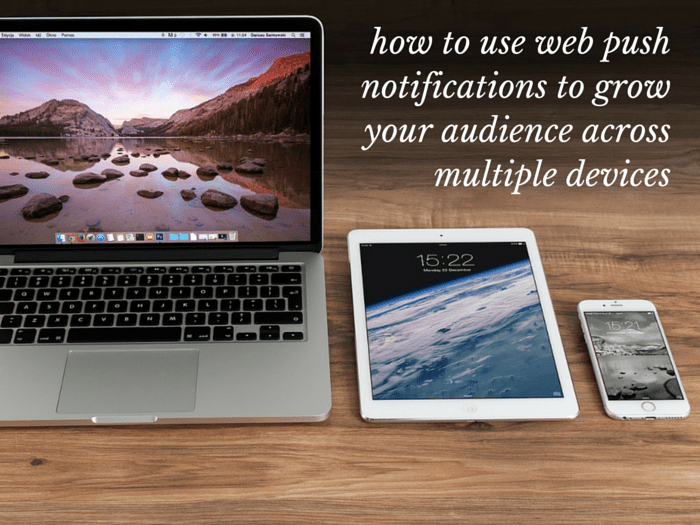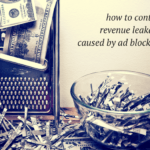What are web push notifications and how can they help you? Read on to find out.
Not so long ago, and in a galaxy not very far away, there lived Picard, the owner of StarTrekNews.com — a website for the latest updates in astronomy. Picard had a problem; even though his well-researched articles drew a large number of readers each time a new one was published, few of those readers came back for more.
He tried everything — emailing regular newsletters to subscribers, sharing on social media networks, reaching out to industry influencers, and though his numbers did show a slight increase, it just wasn’t cutting it.
It was then that Picard came across something called web push notifications. He came to know that websites can now send push notifications to people on desktop and mobile, similar to how mobile apps send notifications.
Excited by the fact that he can notify his readers of the latest article on their desktops and mobiles, he quickly signed up for a tool that provides this service and, you guessed it, all was right again in Picard’s world.
Basically, Picard went from

to

Web push notifications? What’s that?
The above story may or may not be a figment of our imagination. Web push notifications, though, are 100 percent fact.
In March this year, Google released Chrome version 42 in which it enabled web push notifications to, “allow your users to opt-in to timely updates from sites they love and allow you to effectively re-engage them with customized, engaging content.”
Push notifications for websites are here to stay. And thus, it is important to understand what they are. Most of you reading this will be familiar with mobile app push notifications, which are messages that are sent by an app which land in your notification tray.
We are also familiar with web notifications, which are notifications that a website sends to a user while the website is open on the user’s browser. Think of how Facebook sends you notifications like: “Jonas mentioned you in a comment”. These appear only if Facebook was open on your browser when the event occurred. These are web notifications.
Web push notifications, also known as browser push notifications (or just push notifications, if you’re interested in saving your breath) work differently in that people who are subscribed will receive the notification, even if the website is not open when the notification is being sent. This is how it works:
>> As soon as a reader arrives on your desktop or mobile website, an opt-in box for push notifications is triggered. If the reader clicks on “Allow” he is added to your push notifications subscriber list. The Chrome push notifications look like the following:
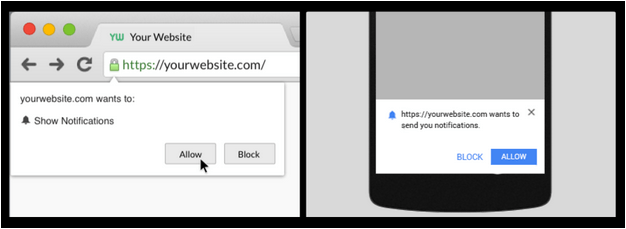
>> When you send a push notification, your subscribers will receive a notification on their device. Clicking on the notification will take them to a URL which you have specified for that particular notification.
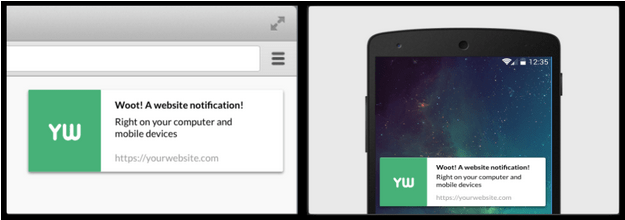
In short, web push notifications = app notifications enabled for websites and which work on both desktop and mobile.

5 Reasons Why Bloggers and Publishers Need to Use Web Push Notifications
- Drive more traffic to your website
Driving traffic, both repeat and first-time, to your website is likely the most important thing on your mind if you’re handling a publishing or blogging website.
More traffic leads to more paid subscriptions. In addition, more traffic leads to greater visibility for ads displayed on your website and, consequently, allows you to command more revenue from advertising.
Web push notifications give publishers and bloggers the ability to drive traffic by nudging their readers to return to the website.
According to a study done by Oppolis Software, digital publications that use push notifications see an increase of 102% in overall downloads compared to publications that don’t use notifications. - Communicate instantly with your readers
One of the main advantages of web push notification is that it demands an immediate action on the part of the subscriber. Either the subscriber closes the notification or he clicks on the notification and is taken to the content.
Publishers can use this unique functionality by sending instant content through push notifications like breaking news, stock market updates, updates for sporting events, weather forecasts, election day results etc.
If spread through other channels, this “instant” content may seem dated to the reader if he has already read it on another website.
Sent in the form of a web push notification, this becomes a “digital nudge” encouraging the subscriber to know more and return to the website. - It’s easier for a reader to opt-in compared to email
Opting-in to receive web push notifications is a one-click process.
Compare this to the email opt-in process, which requires the reader to enter his email address at the very least. This increases push notification opt-in compared to email.
Some early studies have shown push notifications to have an opt-in rate 10x times the rate at which an average email list builds.
Thus, having a push notification subscriber list enables you to reach readers you otherwise wouldn’t have reached. - A cost-effective alternative to building an app
If the only reason you’re building an app is to send users instant notifications, then a better option would be to simply subscribe readers from your mobile/desktop website and send them web push notifications.
In fact, the debate between apps and websites is still ongoing. Some experts say that for small and medium-sized companies, mobile websites reach more people than apps do.
Another factor to be considered here is cost. Sometimes, building an app just doesn’t make sense from a financial and business standpoint.
Considering this, web push notifications are a great way to leverage the power of interactive, instant communications with your readers, without incurring the cost of building an app. - Setup is simple and foolproof
There are some great tools out there that you can use to set up push notifications for your website and start sending notifications, all in a span of 5 minutes!
I can’t speak for all of them, but most tools require the user to just add a piece of code in the closing head tag of their web pages. After that, the user can use the tool’s dashboard or interface to collect subscribers and send notifications.
Another advantage of using a tool or product which helps you send push notifications is you can improve the overall notification experience of your readers by using advanced features like setting a custom trigger for opt-in, segmentation of your subscriber list, targeting of notifications to particular segments etc.
About the author
Anand Kansal works as a Marketer at PushCrew, a push notifications tool which lets you send push notifications from your desktop and mobile websites to your subscribers. PushCrew enables Chrome push notifications, Safari push notifications, and mobile push notifications on your website. They also have an API you can use to customize and enhance your notification experience. You can start using their free account immediately and send your first notification in less than 5 minutes!
You can reach Anand at anand.kansal@wingify.com or @anandkansal88.
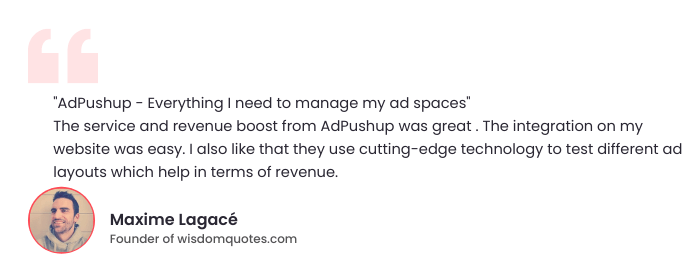
FAQs
Web push notifications are notifications that are sent directly to the desktop web browser or the mobile web browser of the user.
Push services receive network requests, validate them, and deliver push messages to the appropriate browsers. Messages are queued until the browser becomes available if it is offline. Developers have no control over which push services browsers use.
Malware can also be carried by them. Hidden malware in push notifications either delivers more advertising (malvertising, such as the recent SundownEK campaign) or helps hackers steal your money, data or identity.
A growth blog for professional bloggers and ad ops professionals.
